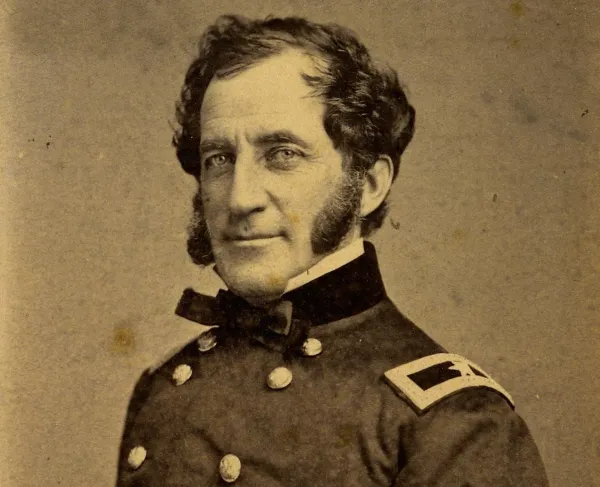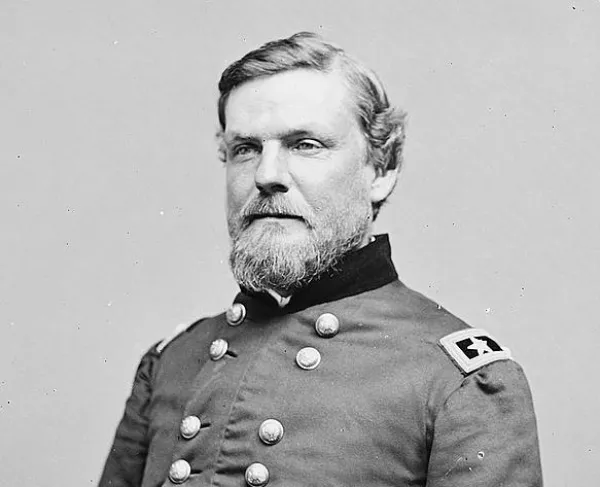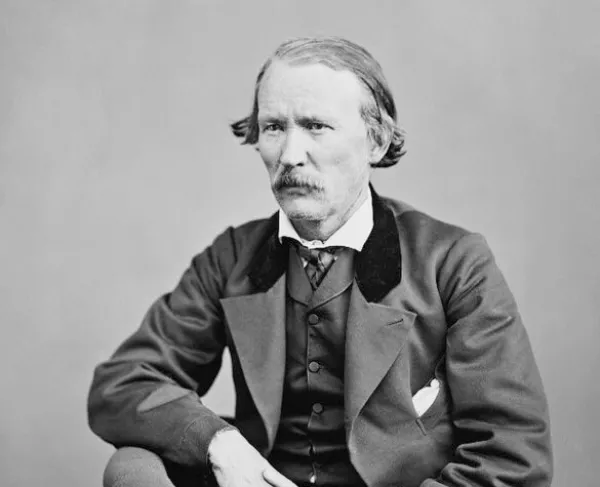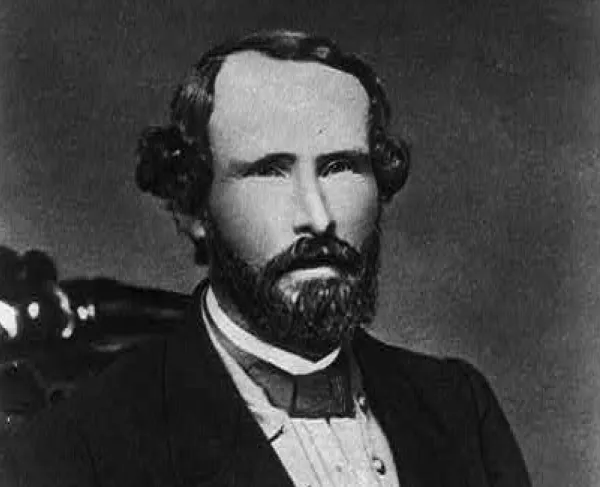Abram Duryée

Abram Duryée was born to parents, Jacob and Eliza, on April 29, 1815, in New York. He was the first born of their eight children. Duryée received his education from Columbia College’s grammar school.
At age 18, Duryée enlisted in the 142nd Regiment of the New York State Volunteers following in the footsteps of his paternal grandfather who fought in the Revolutionary War and his father and two uncles who served during the War of 1812. He rose through the ranks and in 1840 transferred to the 7th Regiment where he held Captain, Major, Lieutenant-Colonel, and Colonel positions. Duryée aided in subduing multiple riots including the Astor Place Riots in 1849 where he was wounded twice, and over 20 were killed, and the Dead Rabbit Riots in 1857. His regiment also notably escorted President Monroe’s body from New York to Richmond, Virginia. After two decades in the New York Militia, Duryée retired in 1859, despite protests from the state and his troops. He published Standing Orders of the Seventh Regiment National Guard in 1861 outlining soldier and officer camp and garrison duties.
Duryée’s personal life flourished as much as his career in the militia. He ran a successful merchant business importing mahogany and other lumber, making him very wealthy. He also married Caroline Elizabeth Allen in 1838. Together they had five children.
The start of the Civil War brought Duryée out of his short military retirement. In the spring of 1861, he began recruiting men to fight for the Union gathering nearly 1000 men within 16 days. They were mustered into service in the 5th New York Infantry Regiment on May 9, 1861. It is important to note, however, that they were not a regular regiment of men. One year prior, Duryée observed Captain Elmer E. Ellsworth’s Zouave Cadets of Chicago demonstration. As someone who prioritized training and discipline, Duryée was impressed by their incredibly precise performance. He embraced “the Zouave craze,” influencing his regiment to be dressed in imitations of the colorful French uniforms and known as the “Duryée Zouaves.”
Duryée, recognized as an extremely capable instructor and drillmaster, trained his men at Fort Schuyler for a few weeks before traveling to Fort Monroe in Virginia. In June 1861, his regiment engaged in fighting for the first time at the Battle of Big Bethel. Though the Union retreated, it was a success in that Confederate troops withdrew to Yorktown. The Duryée Zouaves “gallantly performed.”
In September 1861, Duryée was appointed Brigadier General of Volunteers. In that role, he oversaw new enlistee training; Duryée, however, wanted to be fighting on the battlefield. In April 1862, he took command of a brigade and led them at the Battles of Cedar Mountain, Second Manassas, South Mountain, and Antietam and sustained five wounds. Duryée then replaced James B. Rickett’s as division commander during the Battle of Antietam when Ricketts was wounded. Enduring his own wounds at Antietam, Duryée was placed on a 30-day leave. He returned to find that headquarters placed a less tenured brigadier general in charge of Ricketts’ division. With his pride hurt, Duryée submitted his resignation on January 5, 1863. He did not participate in the remainder of the war. Despite his resignation, Duryée was elevated to the rank of Brevet Major in July 1866 for his service.
Following the war, Duryée returned to his lumber merchant business. He also briefly held two public service roles: police commissioner (1873-1874) and dockmaster (1884-1886). Duryée suffered a stroke in 1887 and lived for three years with related illnesses before dying at age 75 on September 27, 1890. His funeral at Harlem’s Church of the Holy Trinity was attended by some of the Duryée Zouaves and the 7th New York veterans, some of whom were pallbearers. A rendition of “Good Night” on the bugle and a three-volley final salute fired by Company B of the 7th New York concluded the procession. He was buried in Green-Wood Cemetery in Brooklyn.
Further Reading:
Generals in Blue: Lives of the Union Commanders by Ezra J. Warner (Louisiana State University Press, 1964)
History of Duryée's Brigade During the Campaign in Virginia Under Gen. Pope and in Maryland Under Gen. McClellan in the Summer and Autumn of 1862 by Franklin B. Hough (1864)
Standing Orders of the Seventh Regiment National Guard by Abram Duryée (D. Van Nostrand, 1861)





